Our Low FODMAP Pasta Primavera is made in one pan and features low FODMAP, gluten-free penne, loads of fresh arugula and spinach, chives, asparagus, peas, fresh herbs and Parmesan all in low FODMAP portions.
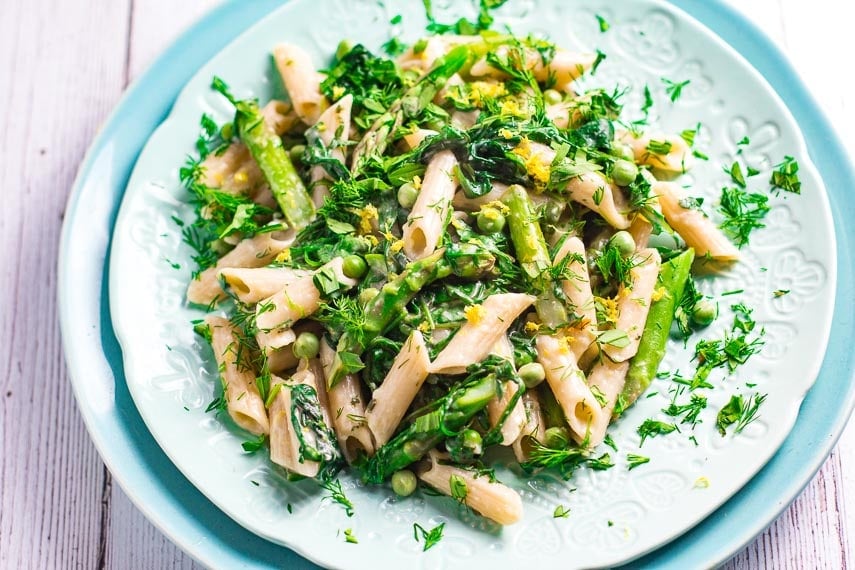
The name, by the way, simply means springtime pasta, which can be interpreted in a variety of ways.
History Of Pasta Primavera
There are aspects to the history of the classic pasta primavera that we know, and other factors that are not as clear cut. It definitely harkens back to the mid-late 1970s in the U.S. and we know it was popularized by a New York Times article written by Craig Claiborne and Pierre Franey. They included a recipe and declared that it was the most talked about dish in Manhattan at the time. It certainly became a defining dish of the decade.
Several people have either claimed to be the originator of the recipe or have been credited with its birth. Ed Giobbi, an artist and James Beard award winning cookbook author, is one as are Chef Jean Vernges and restaurateur Sirio Maccioni.
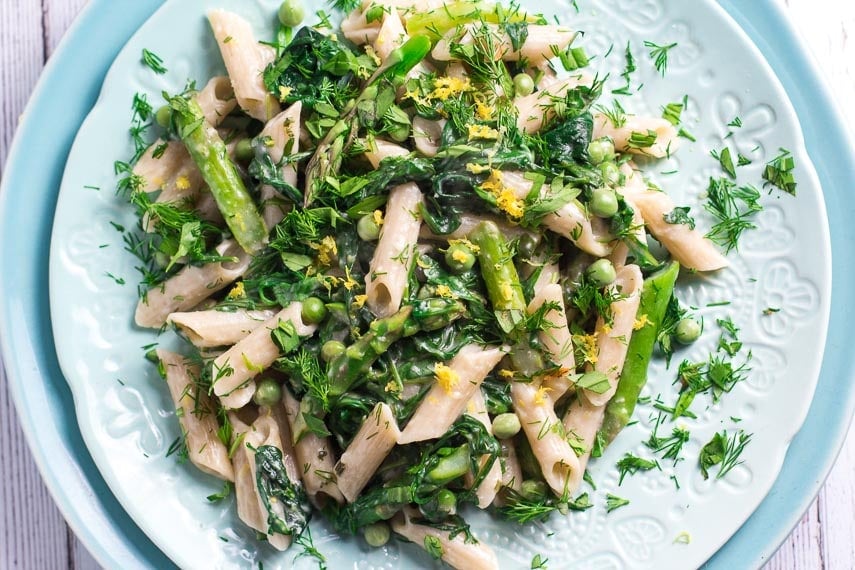
What Was In The Original Pasta Primavera?
Ed’s story is that in 1973 Maccioni wanted him to provide a pasta recipe for the new restaurant he was developing, Le Cirque. Giobbi claims that the original from him was comprised of spaghetti with fresh tomatoes, basil, good olive oil and garlic.
Le Cirque opened in 1976. Maccioni says the dish was created by his wife and expanded upon by chef Vernges. By the time it landed on the restaurant’s menu it included cream, asparagus, peas, broccoli, mushrooms, other vegetables and fresh herbs. Versions have cropped up that also include chicken stock as well as butter. The pasta was usually spaghetti or some other long thin pasta.
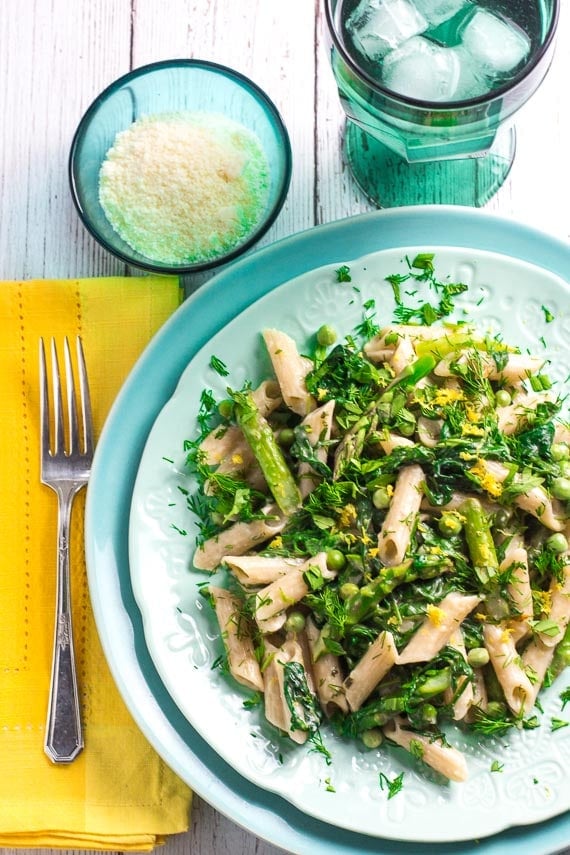
Ingredients For Low FODMAP Pasta Primavera
Check out all of the incredibly delectable low FODMAP ingredients that go into our Low FODMAP Pasta Primavera.
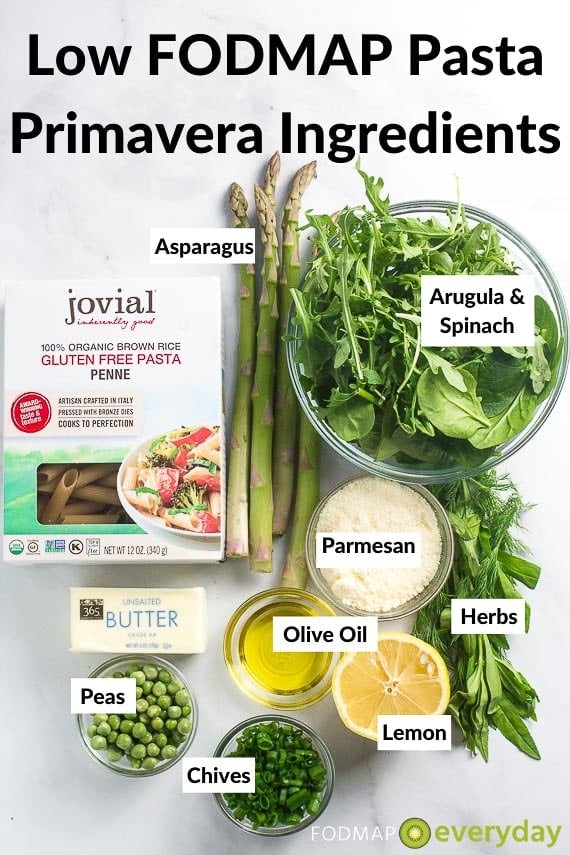
We have taken liberties with the original recipe, as you can see in the images. This was done for a few reasons:
- I wanted to be able to make a one-pan version and the penne shape pasta is more amenable to that approach than spaghetti.
- Tweaking the recipe for a low FODMAP approach meant sticking with vegetables that we could stack, that would work well in the one-pan preparation, and that were representative of spring.
- The chosen vegetables also needed to cook in relatively the same time frame.
Are Asparagus and Peas Low FODMAP?
I am sure you are wondering about the FODMAP content of asparagus and peas. There ARE low FODMAP portions of each of these vegetables.
Let’s Look at Asparagus
Monash University and FODMAP Friendly have both lab tested asparagus.
Monash states that asparagus are Green Light low FODMAP in amounts of 2/3 spear (12 g), which is what you will find in our serving size recommendation.
At the FODMAP Friendly labs they failed at an amount of 2 spears (30 g) and the FODMAP listed is excess fructose and fructans.
Our friend Alexandra Caspero, the Registered Dietitian and New York Times bestselling Plant-Based Chef behind Delish Knowledge has a wonderful article on how to cook asparagus. Learn the best way to cook asparagus– how to cook asparagus in the oven, sautéed, grilled and steamed. And then take these skills and use them when following our low FODMAP recipes!
Let’s Look at Peas
Monash University and FODMAP Friendly have both lab tested peas.
Monash has tested canned peas as well as frozen peas and they have different FODMAP content. For frozen a Green Light low FODMAP serving size is 1 Australian tablespoon (15 g). For canned, drained a low FODMAP serving size is ¼ cup (45 g).
At the FODMAP Friendly labs they have only tested frozen peas and those failed at an amount of ½ cup (75 g) and the FODMAPs listed are primarily excess fructose and mannitol.
How To Make Low FODMAP Pasta Primavera
Assemble all of your ingredients before cooking as the preparation goes swiftly.
First step is to briefly sauté the chives or scallion greens in oil.
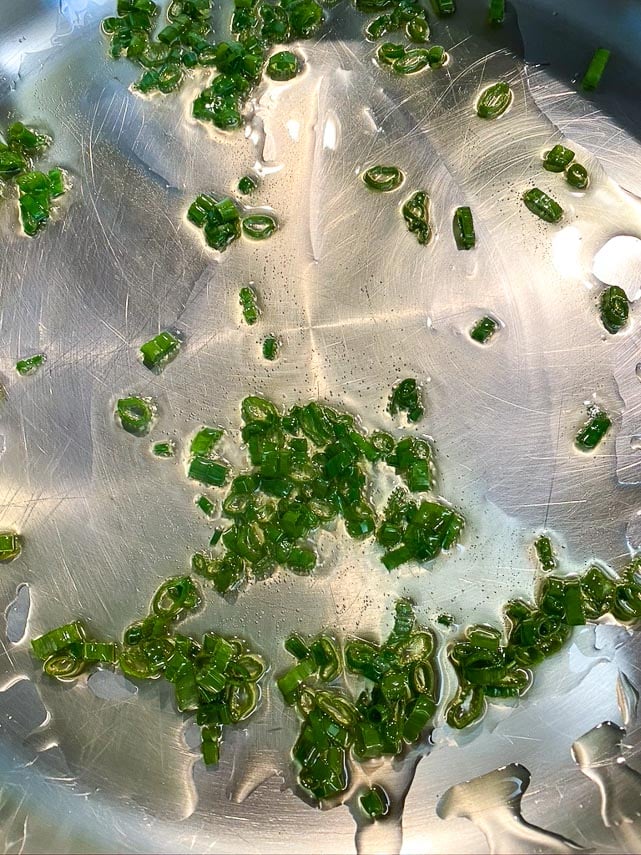
Then add the water and pasta, cover the skillet and boil until the pasta is par-cooked, but still firm.
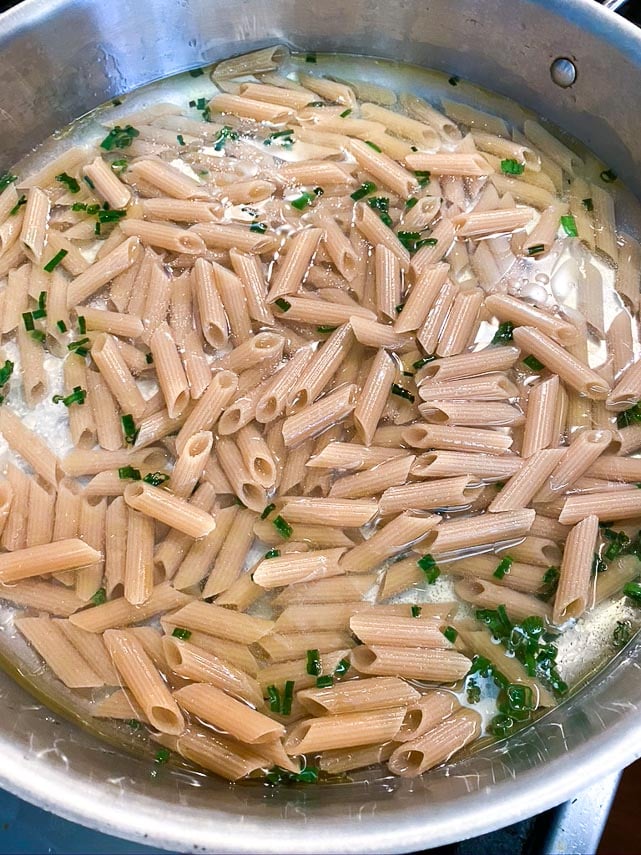
Add the asparagus and cook very briefly; just until they brighten a little bit.
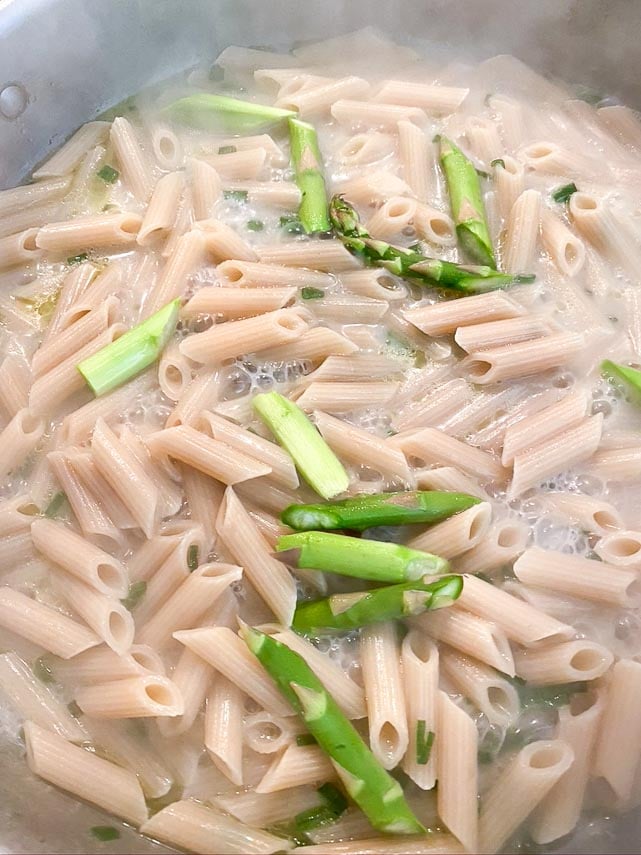
Stir in the arugula and spinach, which will look voluminous.
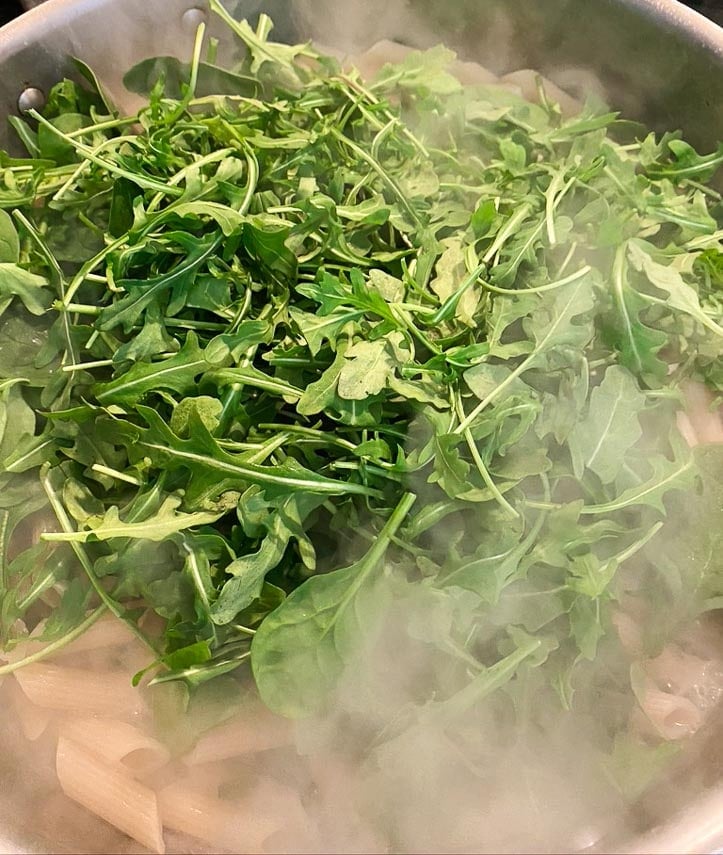
They will begin to wilt down immediately when they are added to the hot pasta.
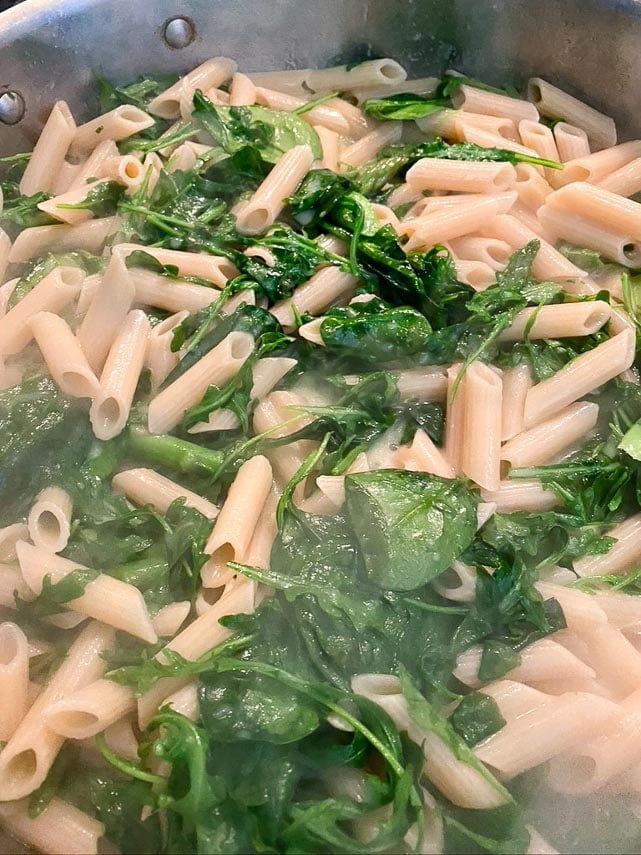
Add the peas towards the end and cook very briefly, maybe 30 seconds. Keep them bright green and crisp!
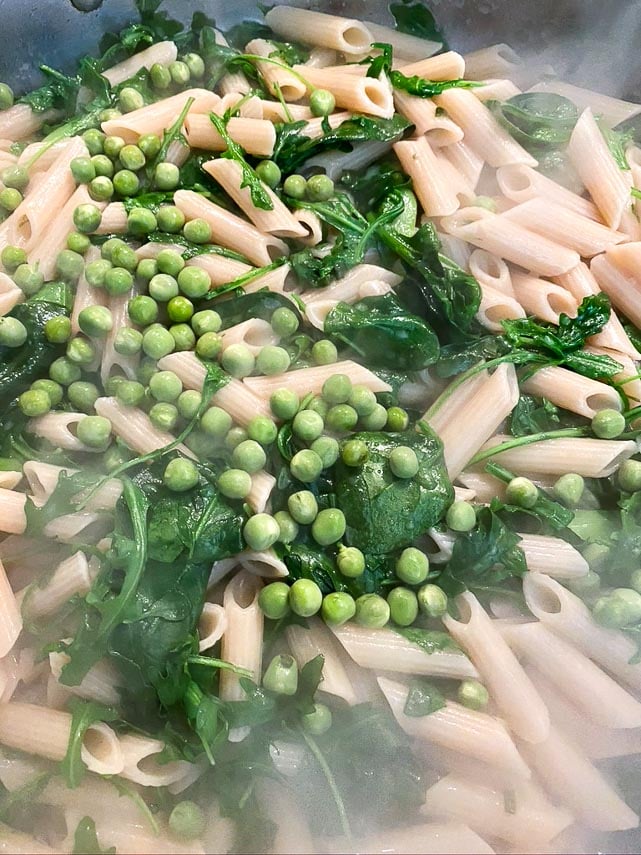
Add the butter, Parmesan, lemon juice and herbs off the heat.
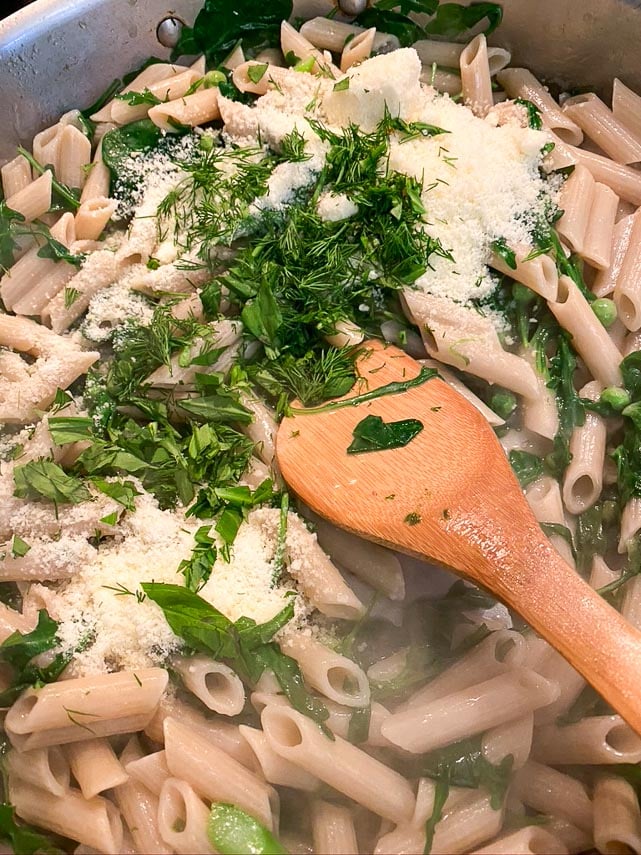
Be ready to serve right away! Our Low FODMAP Pasta Primavera is spring on a plate!
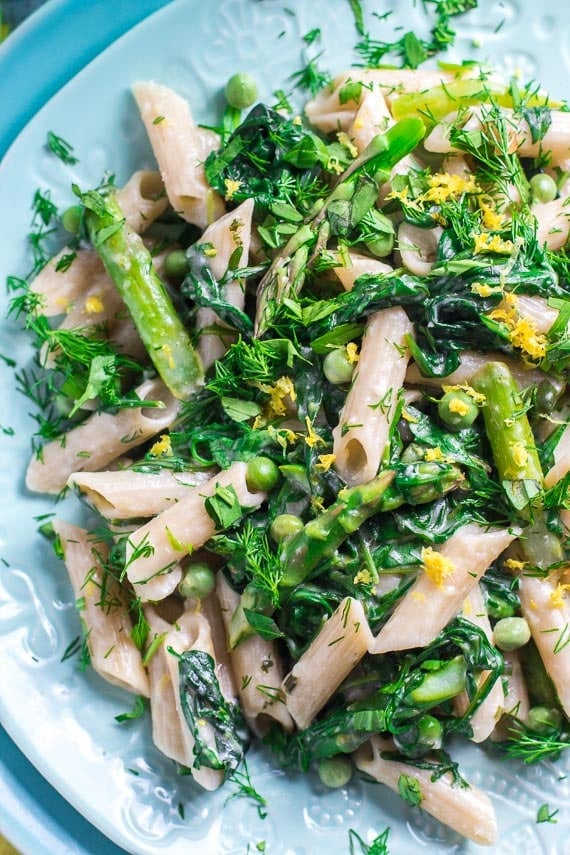
Note on Arugula: For years Monash had reported that arugula contained NO FODMAPs in lab testing. During a recent smartphone app update, the statement changed to “only trace amounts”. They still recommend to “eat freely and according to appetite”.
Check out our article on Foods With A Trace of FODMAPs.
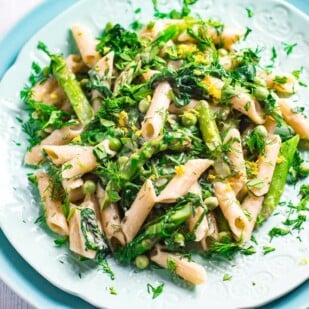
Low FODMAP Pasta Primavera
Our Low FODMAP Pasta Primavera is made in one pan and features low FODMAP, gluten-free penne, loads of arugula and spinach, chives, asparagus, peas, fresh herbs and Parmesan all in low FODMAP portions.
Ingredients:
- 2 tablespoons Onion-Infused Oil, made with shallots and olive oil; extra if needed
- 1/3 cup (24 g) chopped chives or scallion greens
- 3 1/2 cups (840 ml) water
- Kosher salt
- 12- ounces (340 g) low FODMAP, gluten-free penne, such as Jovial brand
- 3 asparagus stalks (50 g), trimmed, cut into 2-inch (5 cm) lengths
- 3- ounces (85 g) fresh baby arugula leaves
- 3- ounces (85 g) fresh baby spinach leaves
- 40 grams frozen peas, about ¼ cup
- 2 tablespoons unsalted butter
- 3- ounces (85 g) finely grated Parmesan cheese
- 2 tablespoons freshly squeezed lemon juice, plus 1 teaspoon finely grated lemon zest
- 2 tablespoons chopped fresh dill
- 2 tablespoons chopped fresh tarragon
- Freshly ground black pepper
Preparation:
-
Heat the oil over medium heat in a large straight-sided skillet until shimmering (we used a pan 14-inch/35.5 cm wide and 3-inches/7.5 cm deep); you will need a cover for later. Add chives or scallion greens and sauté until soft, but not browned. Add the water, a large pinch of salt and the pasta, stir well, cover and bring to a boil. After 4 minutes add the asparagus and cook for about 30 seconds, then stir the arugula and spinach into the pasta and water. Re-cover the pot. Keep boiling until pasta is a little firmer than al dente. Do not let the water completely evaporate; the dish should look juicy. Stir in the peas and allow to cook for about 30 seconds, just to heat through.
-
Remove from heat; stir in butter, Parmesan, the lemon juice, zest, dill and tarragon. Toss everything together well; if mixture looks dry, drizzle in a little more oil. Taste and season with salt and pepper and serve immediately.
Notes:
Tips
Variations:
• You can add 4-ounces (115 g) prosciutto, torn into pieces, stirred in with the peas
• Add ¼ cup torn fresh basil leaves instead of dill and tarragon
FODMAP Information
Our recipes are based on Monash University and FODMAP Friendly science.
- Cheese: Many cheeses have low FODMAP serving sizes. The low FODMAP diet is not a dairy-free diet. Hard cheeses such as Parmigiano Reggiano or Pecorino Romano have been lab tested by Monash University and are low FODMAP in 40 g amounts.
- Lemon Juice: Monash University has lab tested lemon juice and it is low FODMAP in ½ cup (125 g) amounts.
- Onion-Infused Oil: Make your own Onion-Infused Oil or buy a commercial equivalent for the easiest way to add onion flavor to your food. Fructans in onions are not oil-soluble, so onion-infused oil is low FODMAP.
- Pasta: You have to read labels but there are many low FODMAP and gluten-free brands of pasta available. Use what is called for in individual recipes. Our go-to is rice based pasta. Monash University lab tests states that 145 g for 1 cup cooked pasta is a low FODMAP serving and FODMAP Friendly lab testing suggested 2 cups or 146 g cooked is low FODMAP.
- Scallions: The green parts of scallions are low FODMAP as determined by Monash University lab testing and can be used to add onion flavor to your low FODMAP cooking.
Please always refer to the Monash University & FODMAP Friendly smartphone apps for the most up-to-date lab tested information. As always, your tolerance is what counts; please eat accordingly. The ultimate goal of the low FODMAP diet is to eat as broadly as possible, without triggering symptoms, for the healthiest microbiome.
Nutrition
All nutritional information is based on third-party calculations and should be considered estimates. Actual nutritional content will vary with brands used, measuring methods, portion sizes and more. For a more detailed explanation, please read our article Understanding The Nutrition Panel Within Our Recipes.
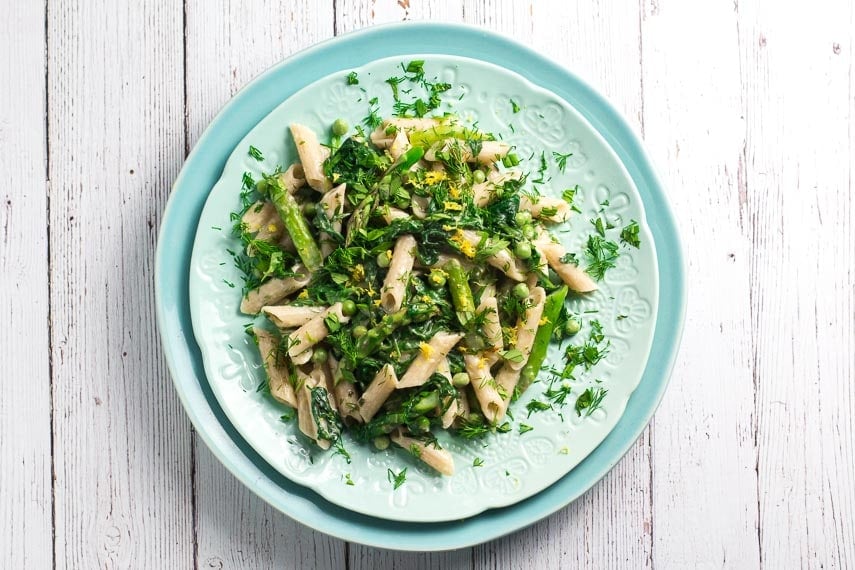
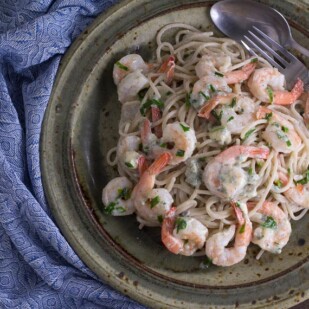
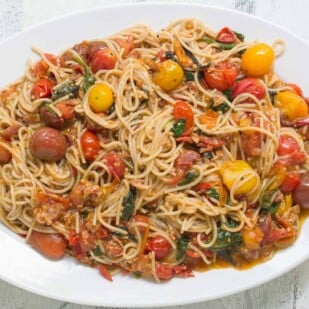



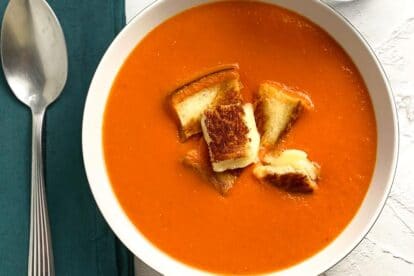
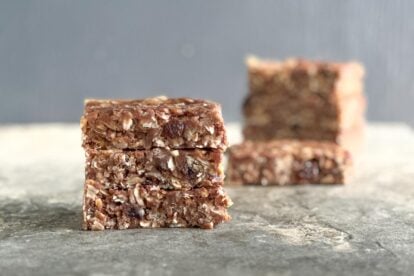
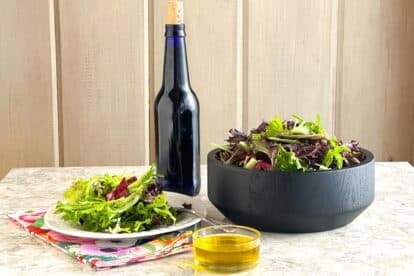
Needed way more water about a 1/4 of the pasta was either stuck to the pan or hard. I added tons of water half way through but it was too late. But I will try again.
I would double check that used the amount of water called for but also your pan size. I find the biggest issue with these one pot pasta dishes is the ratio of the volume of food to size and shape of pan. Our was 14-inches (35.5 cm) across and about 3-inches deep (7.5 cm), FYI. I just added the dimensions to the recipe.
This is a great recipe! It’s easy, flavorful, and can be easily customized. I make it at least once a week 🙂
Thank you for writing and letting us know, Jennifer. Hopefully this will inspire others! Always remember to recalculate FODMAP load when you make changes:)